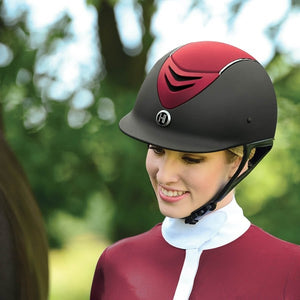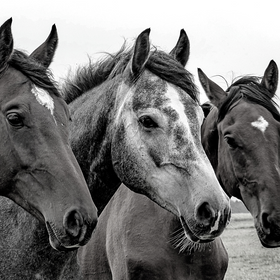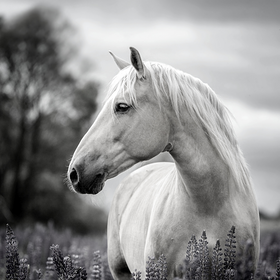
Tips for Riding in the Snow - For Riders
The snow is starting to fall in most areas this time of year. While snow can be very picturesque, it comes with freezing temperatures and can pose dangers to horses and riders. Some riders opt not to ride in the winter, but for those who cannot hang up their tack for the entire winter season, careful preparation and the right attire are needed. Before you hit the trail for a snowy ride, prepare for the temperatures and stay safe with these tips.
One of the most concerning parts of winter riding for most riders is the icy temperatures. While you don’t want to wear your summer gear and freeze, traditional winter clothing is not really horseback riding friendly. Heavy boots, slipper pants, and tons of layers make it hard to get on, stay in the saddle, and feel unrestricted.
Picking the right winter riding clothing and accessories can keep you comfortable during your ride. Layering is key for winter riding. Your temperature is going to fluctuate between the barn and the arena or trail. Having layers gives you the ability to easily add or remove layers as needed to keep you comfortable.
Keeping Your Hands Warm
Winter riding gloves are a must, but many riders find them to be too bulky. Winter riding gloves shouldn’t be too bulky and need to be grippy to ensure the reins don’t slip out of your hands. You also want your winter gloves to be durable and hold up to wet conditions. The Heritage Extreme Winter Gloves are a great option for winter riding with an excellent grip.
Keeping Your Feet Warm
After about 30 minutes in the saddle, it is likely your toes are frozen and numb. While it is tempting to wear your normal winter boots while riding, these boots often don’t fit in a traditional stirrup.
When you look for a winter riding boot consider moisture-wicking, style, warmth, and weight. Just like normal riding boots, winter riding boots come in tall and paddock boot styles. The additional coverage from tall boots can go a long way to keep you warm, but paddock boots may be more functional for your everyday routine. You’ll want to look for a lighter boot, generally heavy boots speed up fatigue and reduce your movement. The Mountain Horse Rimfrost boots are a great tall boot option.
Adding thermal or heated socks to your boots is another great way to keep your toes warm.
Keeping Your Ears Warm
Winter wind is unforgiving to exposed ears and it can be challenging to keep your ears protected under your riding helmet. There are a few helmet-friendly options for winter horseback riders. Small ear muffs that wrap around the back of your head often fit well under helmets. A knitted headband can also be modified to fit around your helmet and provide protection.
You want to avoid putting an actual hat under your helmet because it can displace the helmet in the instance of a fall.





